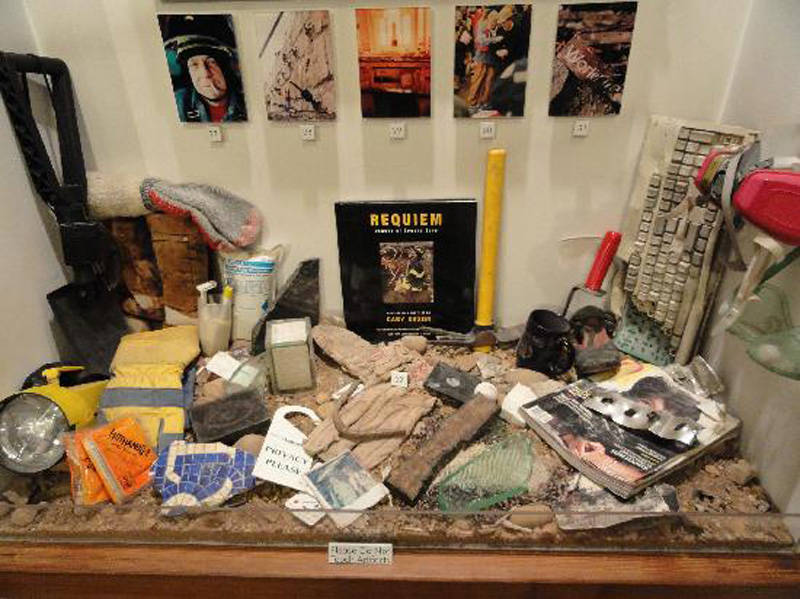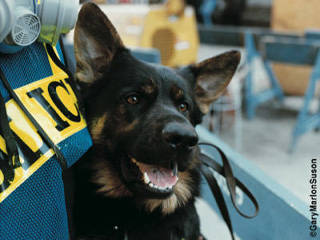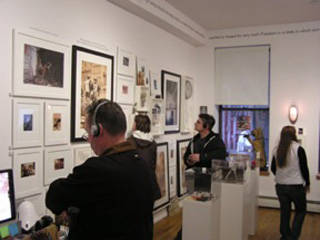Portrait of the 9/11 Portraitist
The following is the translation of an extract of a previously published article for the Italian publication NY Magazine in 2008. It is published with the permission of the author.
Gary Marlon Suson was born and raised in Chicago, Illinois. His love for photography started when he was still in high school, he even won some awards, including a national one, a competition among high schools. “The winning picture was showcased at the World Trade Center. Isn't life strange! Just a few years later I would have a lot to do with that same place. So, I came to New York, from Chicago, to accept my award at a ceremony at the World Trade Center,” Gary says. What a coincidence for him.
He then proceeded to study English Literature at the University of Southern Illinois at Edwardsville, and he later won an acting scholarship at the University of Texas. He had the opportunity to move to New York City to attend an acting seminar led by the famous Uta Hagen and Herbert Bergdorf. He decided to pick up his camera and start shooting again to help his acting and writing career. “Back in 1998 my mother called and asked me 'why don't you work as a waiter to make some money?' and I answered to her 'What else can I do between one role and the other?' So she suggested 'Why not be a photographer?, you have a natural talent and you enjoy it.' My mother even bought me a camera to convince me. I honestly thought I was not really able to do it anymore. Slowly I fell in love with photography again and yes, I did start making more money, especially working in the fashion industry.” At this point in his life, that picture at the World Trade Center was forgotten. So Gary became a fashion photographer, he dubbed important films, worked Off Broadway in “Fool for Love” and “Guiding Light” and in 1999 he wrote “The Taximan Cometh,” a play produced Off Broadway where he portrayed five New York taxi drivers of different ethnic origins.
Then it's September 11, 2001. Gary starts shooting Ground Zero from behind the barricade. He takes pictures of that giant hole in the ground that held the remains of the two twin towers and all they contained. “I don't know why I started doing that, I just know it was something I felt I had to do. I uploaded the pictures I took on a web site because I wanted to document the tragedy so that nobody would ever forget about it. People heard about this site, at the time simply called 'September 11,' and a few months later, in December to be exact, I was asked to become the official photographer at Ground Zero. That's when I crossed the barricades and made it to the other side. I was told to take pictures of what I wanted as long as I did it with respect and I didn't photograph human remains. The rest was up to me. Let's say I would get there at 8 am, I would take pictures and work non stop for the rest of the day, until 8 pm. I would take a break, eat something, rest a little and go back until 1 or 2 am. That was the best time, it was so silent and peaceful. I would help dig and take more pictures. I always had my camera with me, and if there was nothing to photograph I would continue digging with the others. I wasn't the only one to decide what to photograph, many of the guys working through the rubble would call me if they found something to be captured, like the sign of the 110th floor of one of the towers. I decided though not to capture some intense moments that were especially touching but too personal for some people stricken by the tragedy.”
As the months passed Gary started thinking of ways to pay a ever lasting homage to the families of the victims that would also celebrate the strength that had united so many human beings in trying to overcome the tragedy. That's when, in 2005, the “biggest small museum in New York” the Ground Zero Museum workshop “Images and artifacts from the recovery” was conceived.
Gary was inspired by another tragedy, the Holocaust, and by a young heroine and victim of the tragedy, Anne Frank, whose refuge he had visited in Amsterdam. “It all was so real, it really gave you an idea of what had happened, of what people went through. After the visit I went back to the hotel and cried. I was so taken by the story of that family. I wanted to recreate the same effect, to make people feel and share, in a small part of course, the common tragedy that day brought.”
The museum is intimate, filled with silence, the silence that signifies a great loss. Here Gary has collected objects that were at Ground Zero, given to him by fire fighters and rescue workers. Each picture, each item has a story that everybody can know through an audio recording that is available in English, French, Spanish and Italian.
We ask Gary who comes to visit this small yet immense museum: “We see members of the families touched by September 11, groups of survivors, and visitors from all over the world. New Yorkers did not come for the first year and a half, then they started coming. Their biggest concern was not to see images of the airplanes hitting the twin towers. But slowly they understood that this museum shows a different aspect of the tragedy, the human aspect, made of stories of strength, survival and camaraderie. The only image of the towers in smoke was requested by one of the families, as they thought it unfair to sugar coat it, we had to show what really happened, where it all started.”
In the museum there are plenty of tissues available. Gary adds,“The visitors' first reaction is to take in how small the museum is. Hearing about the stories behind each image really captures them and makes them cry. Here people cry. This museum slowly engulfs you and then strikes. It is a place where people hug, console each other and share whatever is helpful to make us feel better.”
Ground Zero Museum Workshop
Images & Artifacts from the Recovery
420 West 14th street
Tel 212-924 1040
www.groundzeromuseum.com
VISITOR TIPS
Visitors are given 2-hours with which to visit the museum. You will be given an appointed time to visit.
Visit the Ground Zero Museum First; followed by the Ground Zero Memorial. It will mean a lot more to you.
Reservation are required. Don't just 'show up' or you will be disappointed.
Audio tours programmed in French, Italian, English and Spanish.
Photographs are allowed. Videos are not.
Plan to spend the entire 2 hours in the museum. You will.







































i-Italy
Facebook
Google+
This work may not be reproduced, in whole or in part, without prior written permission.
Questo lavoro non può essere riprodotto, in tutto o in parte, senza permesso scritto.